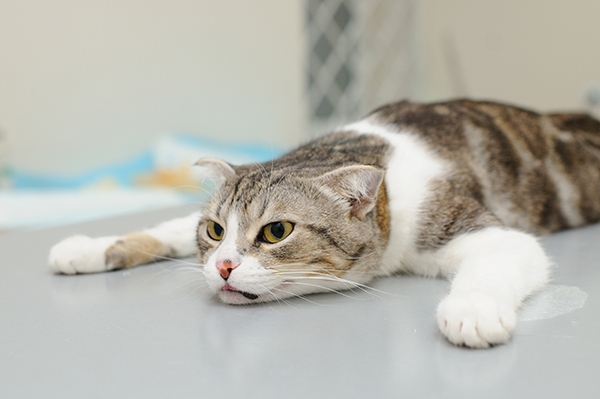Anesthesia & Animals: 5 Things to Know

Does your pet need anesthesia for an upcoming procedure? Don’t worry, anesthesia is routine. It ensures your pet doesn’t move during the procedure and prevents them from feeling any pain. Most pets do just fine under routine anesthesia.
Still, you may have some questions before your pet goes under. Here are 5 common concerns veterinarians hear from patients.
Question No. 1: What is the risk of allergic reaction?
Among cats and dogs, an allergic reaction to anesthesia is quite rare. About 1 in 100,000 have a reaction to an anesthetic agent. Even if they do have a reaction, it’s most likely to be mild. Mild reactions include swelling at an injection site and excessive grogginess.
The worst outcome, of course, is anaphylactic shock and death. Veterinary employees are trained to recognize the symptoms of anesthetic reaction and intervene immediately to protect the health of your pet.
Question No. 2: How should I prepare my pet?
Always consult with your veterinarian for specific advice, but in general it’s a good idea to have your pet fast for several hours prior to anesthesia. This prevents vomiting, which can cause your pet to aspirate (breathe in) particles that clog the lungs. This condition is called aspiration pneumonia and is life-threatening.
If you’ve never visited the veterinary office where your pet will be anesthetized, make sure they have copies of your pet’s full health history. This includes things like blood work, chemistry tests, surgeries, and electrolyte levels.
It’s also a good idea to schedule the procedure on a low-stress day when your pet isn’t exposed to too much activity. This ensures they are well-rested and less anxious as they are anesthetized.
Question No. 3: What happens to my pet during anesthesia?
Although techniques can vary, animal anesthesia usually follows this pattern:
- A veterinary technician assists during the procedure and monitors your pet’s vital signs.
- An intravenous (IV) catheter is placed in your pet’s leg. Anesthetics and hydration can flow through this tube, along with any medications needed.
- IV fluids are given for hydration and proper blood flow.
- A heart monitor and blood pressure monitor provide feedback on your pet’s status.
- The veterinarian performs the procedure.
- During a long procedure, temperature is monitored for severe fluctuations, along with oxygen and carbon dioxide levels.
- Anesthesia is administered at specific levels along the way, to ensure your pet feels no pain but is ready to wake up when it’s over.
Question No. 4: What are the after-effects of anesthesia?
Immediately after the procedure, it’s normal for your pet to feel groggy and shiver, twitch, whine, or moan. That’s why they are usually placed in a darkened room under a blanket, where they’ll wake up gradually in a safe space.
Shivering and whining isn’t happening because they’re cold or upset. These are normal effects of the anesthesia leaving the body. The vocalizing can happen because a breathing tube was removed, which may feel a bit odd.
Your pet is monitored closely during this time. The vet may even recommend an overnight stay, depending on the procedure and how your pet is doing.
Question No. 5: Should I reject anesthesia if it’s too expensive?
It can be very painful for a pet to have a procedure without anesthetic, and downright dangerous for both your pet and the staff doing delicate work. Some procedures simply must be performed with anesthetic.
Costs of anesthetics vary, but most of the total cost comes from the procedure itself and the hours of hospitalization involved. Larger animals also may also be more costly than smaller ones, due to the amount of anesthetic they need.
Still have concerns? Academy Animal Hospital always handles anesthesia with care. To learn more or schedule an appointment for your pet, click here.
